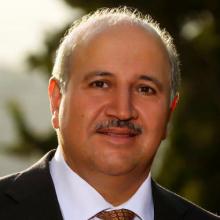You are here
Renewable energy a glimmer of hope for sustainable water development in Jordan
Mar 26,2022 - Last updated at Mar 27,2022
Having achieved the Millennium Development Goals, which the world’s nations have unanimously implemented by 2015 as per the United Nations World Declaration of the year 2000, the world’s nations have come to the conclusion for the need of a more ambitious and detailed plan to achieve a sustainable world through social and economic development that preserves the environment and improves people’s standard of living for generations to come without draining natural resources. In addition to the previous goals on poverty and hunger, the 17 goals (SDGs) have focused on vital issues and sectors such as climate change, water, the environment, sanitation, and energy.
The Arab Region, particularly Jordan, may be the most in need to achieve these goals in the face of a chronic and complex equation between population growth, which has been marred by forced increase due to influx of refugees, and limited water resources. All is exuberated by the pressing upcoming climate change, regional tensions and wars that have negatively impacted achievements of sustainable development goals by the regional countries. In light of the above-mentioned changes and challenges, remains however, the question, how Jordan and countries that share the same circumstances can achieve these goals?
As Jordan entering a new phase of water security in terms of lack of resources with increased demand resulting from the influx of the Syrian refugees and climate change, where water demand has been increased by 25 per cent above the average that coincides with depletion of water resources, drought, poor water governance, insufficient protection and control of water resources from pollution and abuse, water scarcity became a real threat and limiting factor to proper livelihoods such as drinking water availability, food production and economic development needs for new projects to fight poverty and creation of jobs.
Jordan’s major water challenges, namely scarcity, climate change, population growth, refugees, increased urbanization, and overwhelmed infrastructure, are adding considerable pressure on the modest available resources. In the meantime, public water facilities need to adapt to meet the emerging requirements of a dynamic environment by continuing to provide basic services to citizens under a very high cost of water production. Considering the above-mentioned challenges and variables, particularly the high cost of producing water and transporting it from long distances to demand centers, lies the need to nexus water and energy to produce new and additional water at a low cost without adversely affecting the climate. The focus shall be on reducing the cost of electricity production, which constitutes to a large portion of the cost of desalination, production, and transportation of water over large distances. This, however, may require the institutionalisation of the water and energy nexus through a joint water and energy regulatory body.
It’s worth to mention that the average solar production in 2010 was about 37 US cents/kWh according to International Renewable Energy Agency, and since then the cost has almost halved every two years, reaching less than 2 US cents/kWh in the latest awarded solar project for the 800 MW plant in the State of Qatar. Studies indicate that soon, the cost of generation will be less than one US cents/kWh due to the continued decline in the cost of solar panels and their increased efficiency.
If the above figures projected on the Jordanian water sector, particularly for the projects that need transfer over long distances and high pumping lifts such as the national carrier and others, the introduction and use of solar energy makes the cost of water produced and transported less than the current cost of the existing facilities being operate. Jordan’s water sector began working on this concept since 2015 which resulted in renewable energy contributing to about 10 per cent of the total consumption by the sector. Development and construction of solar power plants in the Area of Disi-Mudwwara, Azraq and Dhualeel with large capacities of up to 400 MW/h to meet water projects energy demand will save about JOD 300 million/ year, which is the difference in the cost of electricity current tariff for water sector (11 Jordanian pts/kWh) and the expected tariff from the solar power plant (2 Jordanian pts/KWh). Having said that, the national electricity grid capacity on carrying renewable energy (the green corridor) may need further upgrade in partnership with the private sector as new investment opportunity. It is possible to go further by programming regional electric connectivity (e.g., Lebanon) by having more hours of supply during the day than during the night to allow for more efficient utilization of solar energy.
The significant financial gains by introducing solar energy in major water projects, will be reflected on sustainable economic development throughout all interconnected sectors i.e., water, energy, environment and agriculture.
The introduction of renewable energy in the water sector will improve water projects to be more sustainable and attractive to funding from donor countries, international institutions, and the Green Climate Fund, due to the significant impact of these projects on reducing greenhouse gas emissions and thereby reducing global warming and climate change. Renewable energy is the way to mitigate climate change impact by increasing affordable water supply as one of the important means for adaptation as well as achieving the desired sustainable development goals.
The author is former minister of water and irrigation, and agriculture













